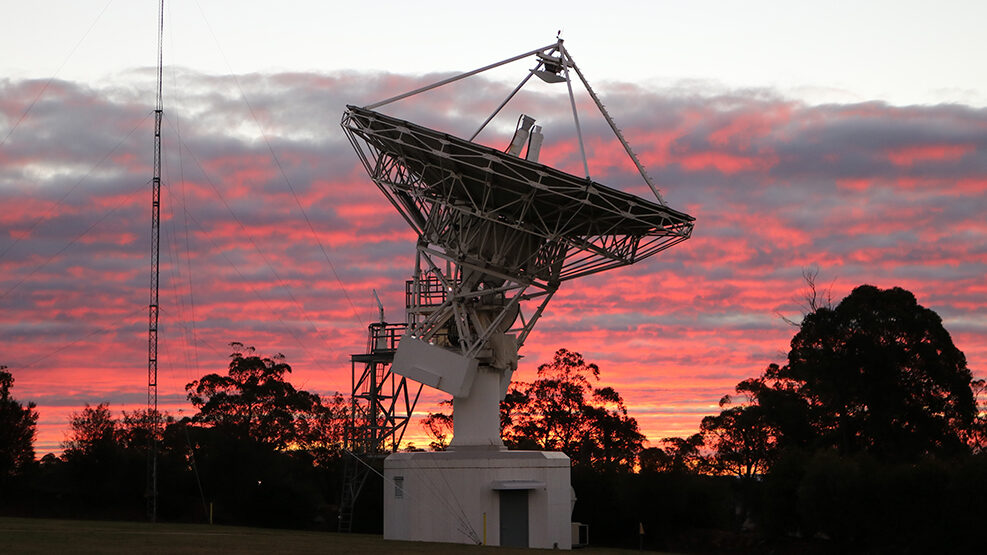
This Lockheed satellite station near Armadale, NSW, is used for tracking, telemetry and control for a range of customers.
SYDNEY — Lockheed Martin has won Australia’s largest-ever defense space contract, to build a satellite and ground station architecture for a program known as JP 9102, the Australian government announced late Monday.
The previous government had planned to downselect from five to two companies at this stage, but the Defense Department here, in an unusual move, announced that Lockheed had been directly awarded the contract for what is expected to be a $4 billion AUD ($2.86 billon) commitment to Australia’s first sovereign military satellite program.
“Currently across Defence there is up to 89 capabilities which depend on satellite communications,” the head of Australia’s air defense and space systems division, Air Vice-Marshal David Scheul, said in the statement announcing the award. “Once delivered, the new system will increase the resilience, agility and flexibility of Defence’s military satellite capability.”
The Department of Defense release said the new system will include:
- New Defence Department controlled and operated geo-stationary communications satellites
- Multiple ground stations across Australia
- Integrated Satellite Communications Management System
- Two new satellite communications operations centers.
The last point is particularly notable, as until today, it had not been clear if ground systems would be included in the final contract.
The Australian Defence Force does have other defense satellite communication options today, but they are not robust. It owns a communications payload aboard an Optus C-1 satellite, which it is nearing the end of its projected operational life; the military also bought access to 20 channels on Intelsat IS-22, a deal that runs out in 2024. (It does have access to the Boeing-built WGS defense constellation, having paid to build one of the satellites, but getting access to the constellation in a timely manner has been problematic.)
Lockheed has experience as the prime for the AEHF secure satellite communications network, which the Australian Defence Force currently has access to thanks to an international agreement. Their solution has been optimized for data throughput, geographic coverage and survivability against counterspace threats.
“We are bringing to bear all of Lockheed Martin’s companywide capabilities as well as our commitment to supporting allied nations to provide an operationally proven system that meets mission needs in terms of coverage, capacity, resilience and extensibility of the constellation,” Robert Lightfoot, executive vice president for Lockheed Martin Space, said in a statement.
The American defense giant is teamed locally with a number of Australian companies for JP9102. Those include Inovor Technologies, EM Solutions, AV-Comm, Linfox, Shoal Group, Ronson Gears, Calytrix Technologies, Conscia, Clearbox Systems, DXC and Blacktree Technology to deliver ground and control segments and beyond for JP9102.
Blacktree Technology, an Australian owned communications solutions specialist, “will primarily support the Lockheed Martin Australia narrowband MILSATCOM ground segment,” as Breaking Defense reported earlier. Meanwhile, DXC Technology, a leading global IT services company, will handle “development of ground and control segment cybersecurity architectures, including interfaces with existing hardware and external software elements.”
Lockheed Martin has also partnered with the Victorian Government to establish the state of Victoria as the engineering and technical hub for the company’s JP9102 work. The company says that will create more than 200 advanced space industry jobs in the state.
Airbus, Boeing Australia, Northrop Grumman Australia and Optus (best known here as a mobile phone carrier, but it also is Australia’s largest satellite operator) all were competing for the contract against Lockheed.





















